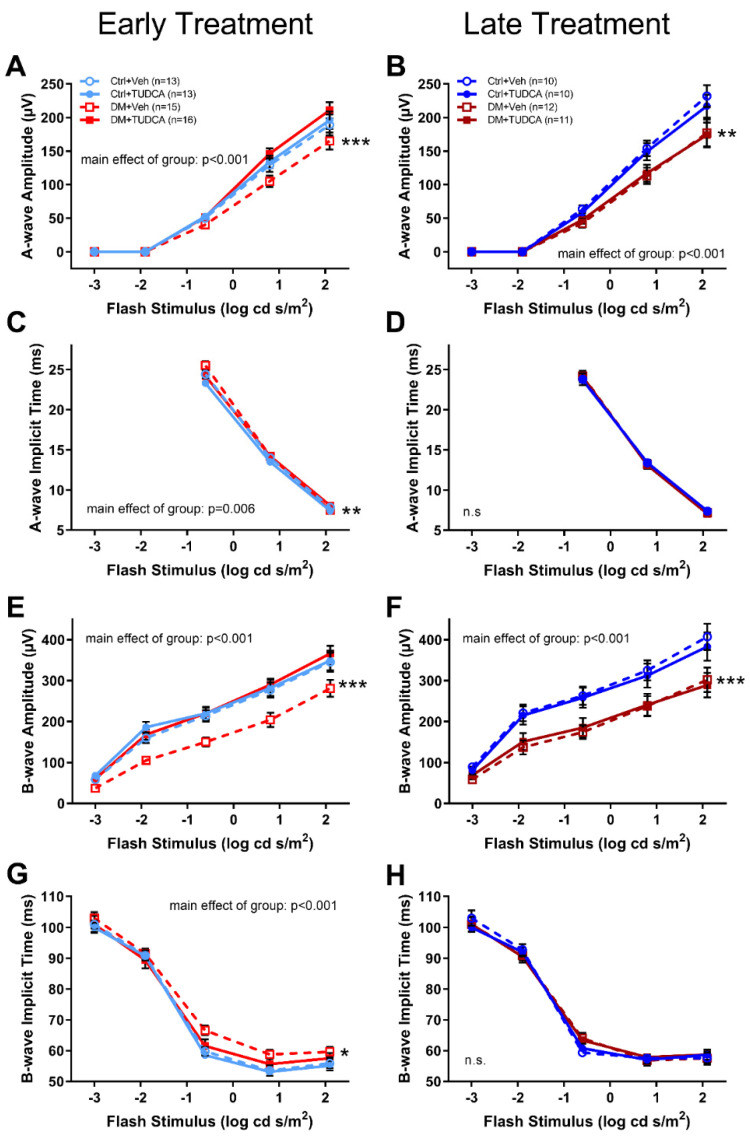Figure 4.
Early TUDCA treatment preserved ERG a- and b-waves in diabetic mice by 8 weeks post-STZ. (A) With early treatment, a-wave amplitudes in the DM+Veh group were significantly reduced compared to the DM+Veh, Ctrl+Veh, Ctrl+TUDCA groups (*** p < 0.001; two-way repeated measures ANOVA, F12,298 = 4.121, main effect p < 0.001). (B) With late treatment, a-wave amplitudes were significantly reduced in the DM groups compared to the Ctrl groups (** p < 0.01; two-way repeated measures ANOVA, F12,243 = 2.416, main effect of group p < 0.001). (C) With early treatment, a-wave implicit times were delayed in the DM+Veh group compared to all other groups (** p < 0.01; two-way repeated measures ANOVA, F3,170 = 3.34, main effect of group p = 0.006). (D) With late treatment, a-wave implicit times were not significantly different. (E) With early treatment, b-wave amplitudes in the DM versus Ctrl groups (*** p < 0.001; two-way repeated measures ANOVA, F12,282 = 2.421, main effect of group p < 0.001). (F) With late treatment, b-wave amplitudes were reduced in the DM+Veh group compared to the other groups (two-way repeated measures ANOVA, F12,219 = 2.416, main effect p < 0.001). (G) With early treatment, b-wave implicit times in the DM+Veh group were significantly delayed compared to the other groups (two-way repeated measures ANOVA, F12,282 = 2.46, main effect p < 0.001). (H) With late treatment, b-wave implicit times showed no significant differences. Holm–Sidak post hoc comparisons indicated by asterisks: * p < 0.05, ** p < 0.01, *** p < 0.001.

